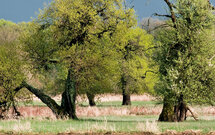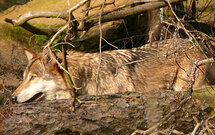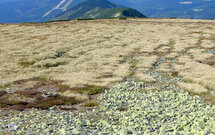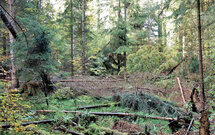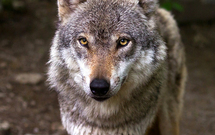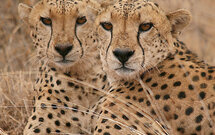Nature Conservation 4/2009 — 31. 8. 2009 — International Nature Conservation — Print article in pdf
In Shark Bay under the Southern Cross
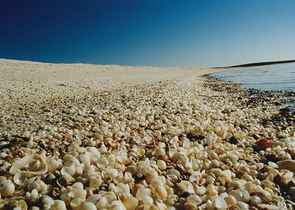
The Shark Bay Area is located on the Australia’s westernmost extremity. It covers almost 22,000 km2and together with a 1,500 km long coastline, it includes a lot of protected areas.
In 1991, the Shark Bay Area has been added to the UNESCO World Heritage List, mainly because of the occurrence of single-celled (unicellular) living fossils in Hamelin Pool. A shallow salt bay has been famous due to recent stromatolites of various shapes and forms, which have been formed by photosynthetic cyanobacteria (commonly known as blue-green algae) for more than 2,000 years. The evolutionarily extremely old organisms forming stromatolites appeared on Earth for the first time approx. 3.5 billion years ago when oxygen was rare.
The above firstly documented organic structures may have significantly contributed to enriching the atmosphere with oxygen up to recent 21 % all atmospheric gases. Therefore, they played a key role in the Earth’s evolution. The 60 km-long Shell Beach, which has been formed for more than 4,000 years, is another remarkable site. It is totally made up of small white-dead shells of cockles, particularly those of Fragum erugatum. At some sites, the shells are packed to a depth of nearly 10 m. Deeper inland, the material formed by so-called coquina shells, also known as Butterfly shells, in the past used in building industry, is mined in Shell Quarry.
The Shark Bay World Heritage Area harbours original Australian fauna. In the heart of the whole area, on Peron Penninsula, a comprehensive recovery programme called Project Eden has been implemented since 1991. Alien non-native feral mammals, e.g. goats, rabbits, sheep, foxes and cats, have been removed outside the area, while native wild species, e.g. the Malleefowl (Leipoa ocellata), Greater Bilby (Macrotis lagotis) or Brush-tailed Bettong, also known as the Woylie (Bettongia penicillata) have been re-introduced there.
Název připojené galerie
Quisque egestas velit non nulla fermentum, aliquet pharetra nunc malesuada. Nullam molestie vel diam non tincidunt. Sed pulvinar lacinia nunc et consectetur. Duis varius leo ac ex scelerisque, ullamcorper eleifend massa consectetur. Nullam in metus ac arcu pellentesque venenatis ac id lorem. Nulla nec ipsum sed enim sodales blandit a sit amet ex.


